There are two other dimensions of the rabbi’s character that fill out the norm he embodies: the style of his own learning and his solicitude for Zlateh, the child who is the sole survivor among his relatives of the massacres of 1648. It goes without saying that the rabbi is a great scholar, but it is the particular manner of his greatness that makes a vital connection to the thematic axis of the story. The resources for scholarship, the shamash observes at many points, were greatly different fifty-four years ago than they are in the present of the story. When it comes to books — the term applies only to sefarim in the sense of scriptural and talmudic texts and their commentaries — the average householder in Buczacz at the time the shamash tells his story has more books on the shelves of his home than were to be found in the town as a whole at the time of Rabbi Moshe (52). Books were scarce and expensive. The first printed Hebrew books appeared only in the second half of the fifteenth century, and the widespread upheavals caused by the massacres of 1648 disrupted the chain of scholarly transmission and made books even scarcer. In an aside, the shamash relates the story of an important rabbi of the time who was about to die; although he regretted leaving the world, he was consoled by the fact that in the Supernal Academy he would have the opportunity of seeing Tractate ‘Eruvin, a major section of the Talmud, which he had never before been privileged to hold in his hands (52). Another anecdote tells of a pair of Talmud students who walk for two days straight because they heard that someone in a neighboring town possessed a copy of the minor tractates of the Talmud. Rabbi Akiva Shas, one of the elders of Buczacz, received his name from the fact that he was the only person in the town to own a complete set of the Talmud ( shas is an acronym for shishah sedarim , the six orders of the Mishnah on which the Talmud forms a commentary, 16). Rabbi Moshe himself has to send to Rabbi Akiva Shas when he needs to consult Tractate Zevaḥim. We are further informed that in those days, except for the Tanhuma, the texts of the midrashim were also not available.
Rabbi Moshe’s own teacher, the revered Rabbi Mikhl of Nemirov, was among the slaughtered in 1648. It was as a young man in his academy in Nemirov that Rabbi Moshe was formed as a scholar, and his recall of those printed texts has had to stand by him after the calamity, when those texts are no longer available. When the rabbi traces the development of prayer as an institution in Bible and Talmud in his great discourse on the twentieth of Sivan, each statement is accompanied by an exact quotation of the source reference. Which is of course as it should be, except for the fact that the rabbi has not been privileged to have access to most of these texts since he was a youth studying in Nemirov and recites them by heart. Although this is assuredly evidence of extraordinary precocity and mental gifts, the true source of the shamash’s veneration lies in the rabbi’s relationship to the texts he so readily brings to his lips. In their eagerness to parade their virtuosity, the scholars of today use passages from Scripture and rabbinic literature as grist for their mill, as means of reinforcing and showcasing their ḥidushim, those novel interpretations or stunning solutions to textual difficulties by which they make their mark on the world. Rabbi Moshe, by contrast, places as his chief object his audience’s understanding of the verses from Scripture rather than the interpretations and constructions built on them. He does so out of the conviction that, understood correctly, the plain meaning of the verse speaks for itself. For that reason he enunciates and even chants each verse, explicating as he goes, so that every member of his flock “can receive it according to his capacity” (49). 15
The rabbi’s everyday practice provides a model for the proper relation between human speech and divine speech. This means, first and foremost, that he says little and speaks only when necessary. His preferred mode of communication with the shamash is the nonverbal gesture, which is sufficient to convey his meaning; often these are instances in which looking substitutes for speaking. When he does speak, he prefers to make his points through quotations from Scripture, and when he does quote, he is careful to insert a brief pause between the quotation and his own words in order to recognize the distinction of one from the other. Rather than giving discursive addresses, his public homilies are strings of verses tied together in thematic strands. In doing so he is not hiding behind the verses or avoiding making his own conceptual formulations; rather, again, he is honoring divine speech and declining to impose his own.
Perplexingly, after delivering these great discourses with their abundance of verses, the rabbi is observed to be in a state of dejection. The shamash reports:
I have heard two reasons for this. One is that he grew sad after every sermon, because, being a great preacher, he was worried that the beauty of his words overshadowed the message he was imparting. The other is that he worried lest he had said something that was not for the sake of Heaven. Years later, after I had remarried, and Zlateh, may she rest in peace, was my wife, I heard from her that after every sermon he delivered, our Master took upon himself a full-day fast of silence. (58)
The shamash’s informant on these matters is none other than Zlateh, the rabbi’s young relation on whose behalf he undertook his journey to Gehinnom. (It is only from this casual aside, by the way, that the reader discovers a small trove of background information: that after she was released from her state of being an agunah, Zlateh married the shamash following the death of his own wife, and that Zlateh has died in the meantime.) Both explanations for the rabbi’s post-sermon tristesse are connected to the extreme anxiety and even danger inherent in handling divine speech and mixing it with human speech. Handling such materials, so the rabbi’s scrupulousness leads him to feel, must inevitably bring with it some culpability; and so the rabbi submits himself to a daylong regimen of silence. Ta‘anit dibur was not an ascetic practice known from earlier Jewish sources or familiar to European Jewry, and so the shamash permits himself a digression in which he explains how he learned of the practice from one Rabbi Hezkiah, a Buczacz native whose ancestors emigrated from Syria and Babylonia.
It is solicitude for Zlateh, finally, that completes the picture of the rabbi as the embodiment of the norm anchoring the world of the story. Zlateh is the granddaughter of Rabbi Naftali, a relation of Rabbi Moshe and a wealthy wine merchant with dealings with the Polish gentry who used his position to better the political situation of his Jewish brethren. Instead of paying what he owed for a wine shipment, one of those Polish noblemen set his dogs on Rabbi Naftali and murdered him. Shortly after that, all the members of the extended family, except for Zlateh, were slaughtered in the massacres of 1648 or died of sickness or starvation in their aftermath. Surviving as a nearly feral child, Zlateh traveled from town to town with a group of survivors, and when they came to Buczacz, Rabbi Moshe’s wife, without at first knowing who she is, arranged for her to be taken into her home. The discovery of her family connection flooded the rabbi, who has suffered so much loss, with a sense of grace and joy. He personally supervises her education and gives her in marriage to Aaron, his prized student. When Aaron inexplicably deserts her, leaving her an agunah at the age of fifteen for the rest of her life, the rabbi is overcome by grief and despondency. But before too long he collects himself and conceives of the idea of visiting Gehinnom. He reasons, correctly it turns out, that Aaron must be dead, because if he were alive it is simply impossible that he would not have sent word to Zlateh and divorced her. The plan to journey to the Netherworld to confirm that fact, it is important to emphasize, is far from being either a swashbuckling adventure or an instance of theological tourism. True, the plan is audacious, but it is also perilous and likely lethal; “visitors” to Gehinnom generally do not return. That the rabbi and the shamash do return is the fact that furnishes the story’s sensational premise. Because this dangerous errand lacks probative halakhic value — Zlateh cannot be released from her bonds on the strength of this spectral sighting — the undertaking is an expression of Rabbi Moshe’s emotional exigency. 16Yet rather than diminishing him in our eyes, this knowledge contributes to his centrality in orienting the world of significance the story constructs.
Читать дальше
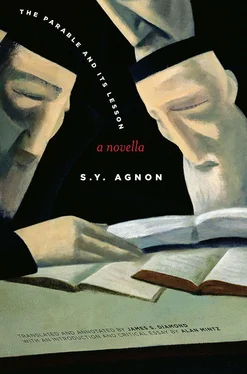

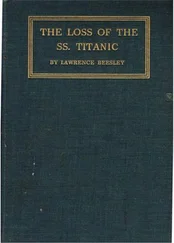
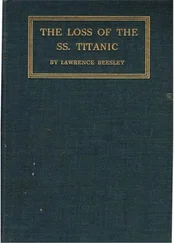


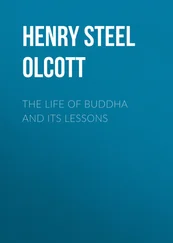
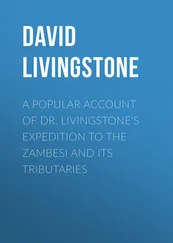




![Edward Ellis - Adrift on the Pacific - A Boys [sic] Story of the Sea and its Perils](/books/753342/edward-ellis-adrift-on-the-pacific-a-boys-sic-s-thumb.webp)